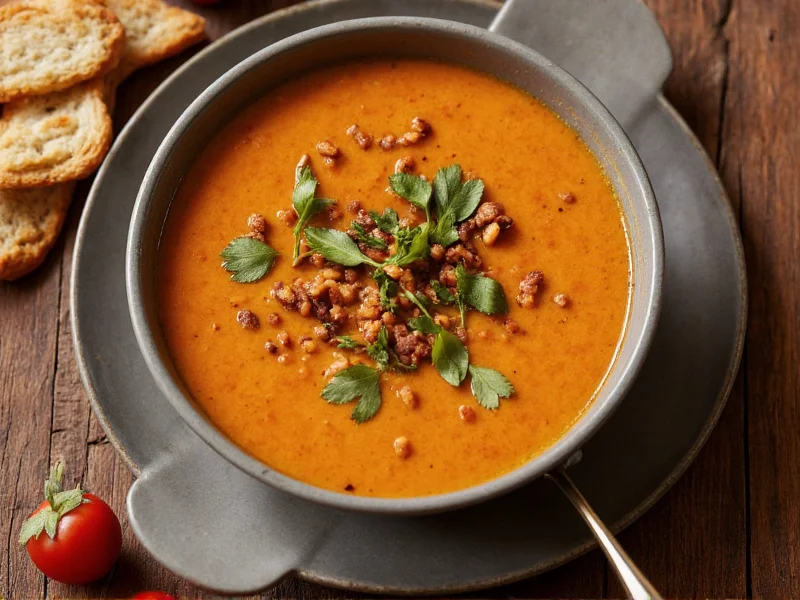For culinary historians and food enthusiasts exploring traditional game recipes, understanding sniping soup provides valuable insight into historical hunting culture and preparation methods for wild game. This distinctive dish showcases how hunters historically utilized their entire catch, transforming small game birds into nourishing, flavorful meals that sustained both body and tradition.
The Historical Origins of Snipe as Culinary Game
Snipe hunting dates back centuries, with these small wading birds becoming particularly popular game in the 18th and 19th centuries. The common snipe (Gallinago gallinago) and Wilson's snipe (Gallinago delicata) were prized for their delicate flavor and tender meat. During the Victorian era, snipe hunting became a fashionable pursuit among the British aristocracy and wealthy Americans, often featured in elaborate hunting parties across estates and rural landscapes.
Historical cookbooks from the 1800s frequently included recipes for snipe preparation, with soup being one of the most common methods. The Apprentice's Companion for the Office of a Cook (1790) and Modern Cookery for Private Families by Eliza Acton (1845) both contain early documented recipes for snipe soup. These culinary texts treated snipe as a delicacy worthy of careful preparation to maximize flavor while minimizing waste of the small birds.
Traditional Preparation Methods for Authentic Sniping Soup
Creating authentic sniping soup required specific techniques that respected the delicate nature of the game bird. Traditional preparation involved several key steps:
| Preparation Stage | Traditional Method | Modern Adaptation |
|---|---|---|
| Cleaning | "Drawing" without plucking to preserve flavor | Complete cleaning with plucking |
| Roasting | Quick roasting to seal juices before soup base | Optional step; often skipped in modern versions |
| Broth Creation | Using bones and trimmings for rich stock | Game stock or mushroom broth alternative |
| Seasoning | Simple herbs: thyme, parsley, bay leaf | Similar herb profile with possible wine addition |
Traditional recipes typically called for roasting the snipe first to develop flavor, then using the carcasses to create a rich stock. The meat would be carefully removed from the bones and returned to the soup near the end of cooking to prevent overcooking the delicate flesh. Classic accompaniments included toasted bread, sherry, and sometimes a touch of cream added at the table.
Cultural Significance in Historical Gastronomy
Sniping soup held particular cultural significance beyond mere sustenance. In the 19th century, serving game birds like snipe demonstrated both wealth and connection to the land. The ability to procure and properly prepare such specialized ingredients signaled social status. Literary references to snipe appear in works by authors like Charles Dickens and Mark Twain, often indicating refined dining experiences.
The decline of sniping soup's popularity began in the early 20th century for several reasons. Conservation efforts protected many game bird species as populations declined. Changing social structures reduced the prevalence of large-scale hunting parties. Additionally, evolving culinary tastes moved away from game meats toward more standardized protein sources. By mid-century, snipe had largely disappeared from mainstream menus, surviving primarily in specialized game restaurants and historical culinary recreations.
Modern Context and Ethical Considerations
Today, preparing authentic sniping soup presents several challenges. Most countries have strict regulations regarding the hunting and consumption of migratory birds like snipe. In the United States, the Migratory Bird Treaty Act of 1918 protects snipe, making hunting and consumption illegal without specific permits. Similar protections exist in European countries under various wildlife conservation laws.
For those interested in experiencing this historical dish, some ethical alternatives exist:
- Using legally sourced game birds with similar flavor profiles like woodcock or certain duck varieties
- Creating vegetarian "mock snipe" versions using mushrooms and root vegetables
- Consulting with licensed game farms that operate within legal frameworks
- Exploring historical recreation through culinary museums and specialized workshops
Culinary historians emphasize that understanding historical dishes like sniping soup helps preserve cultural heritage while encouraging thoughtful consideration of sustainable food practices. The evolution from widespread game consumption to today's conservation-focused approach reflects broader societal shifts in our relationship with food sources and natural resources.











 浙公网安备
33010002000092号
浙公网安备
33010002000092号 浙B2-20120091-4
浙B2-20120091-4